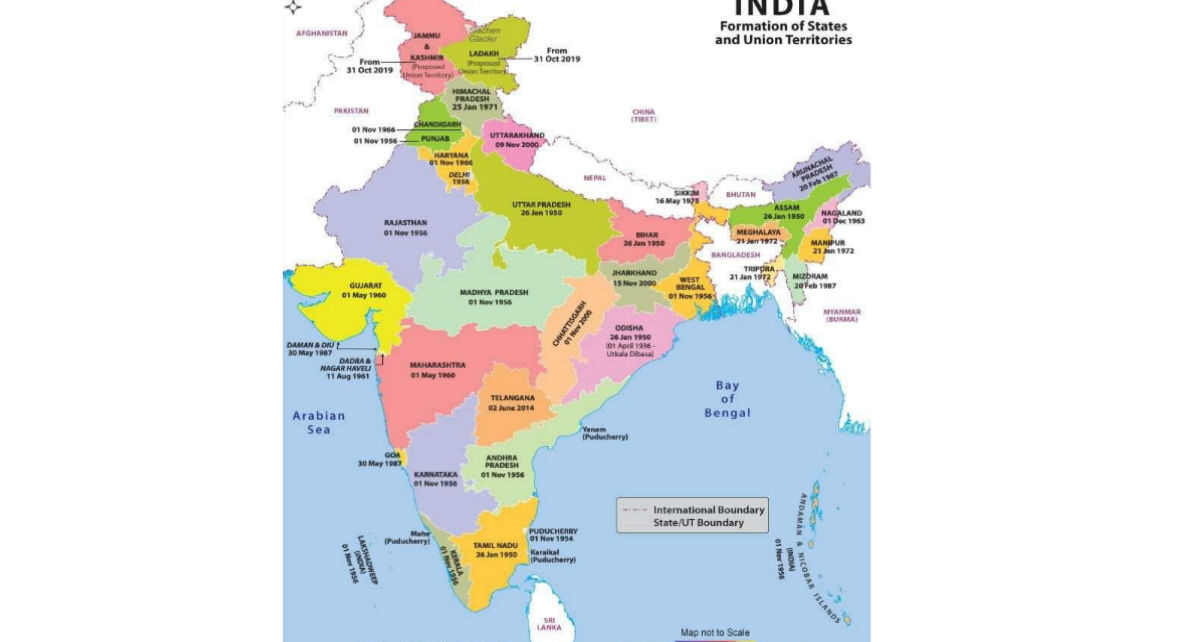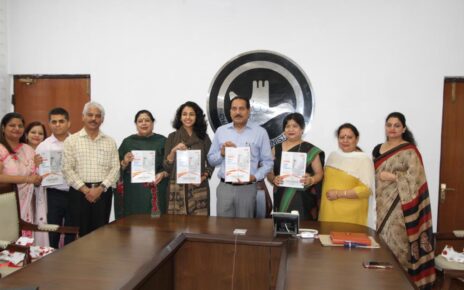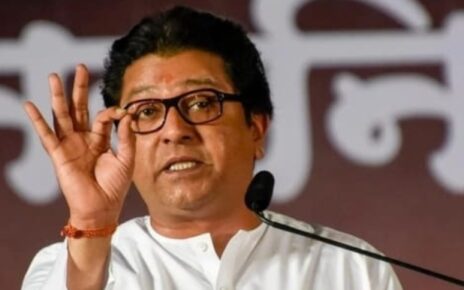Does your mind also get curious about the names of the states of our nation and the story behind them? After all, India is a country with rich history and culture, where the process of giving a name to someone or something is an important tradition.
So, here is the story behind them all. History, language, rulers, etc, have contributed in their own way to the nomenclature.
But first, let us know about India’s name. India derived its name from Indus River, which was worshipped by the Aryan and referred to as Sindhu. The invaders of Persia pronounced it as Hindu. Therefore, the name ‘Hindustan’ combines with Sindhu and Hindu.
Jammu and Kashmir: Jammu has been named ruler ‘Jambu Lochan’ and ‘Kashmir’ means land desiccated from the water. It is also said that Kashmir is named after Rishi Kashyapa. It became Kashyap- mir and finally to Kashmir.
Haryana: Haryana means the abode of God. ‘Hari’ means Vishnu and ‘ana’ means come. During Mahabharata, Lord Krishna came to this place or “Hari bhagwan ka aana hua tha”, so the state got its name from this legend.
Punjab: Punjab is an Indo-Iranian word which translates to land of ‘five rivers’. The five rivers mentioned here are Jhelum, Chenab, Raavi, Beas and Satluj.
Himachal Pradesh: ‘Hima’ means ‘snow’ and ‘achal’ means ‘mountain’. The name translates to snow-capped mountains. Himachal Pradesh literally means – “home of snowy mountains”, and isn’t that so true? We love to visit this state to relax and unwind by wandering in nature.
Rajasthan: Rajasthan was the abode of Rajas. During British rule, it was referred as Rajputana – the land of Rajputs. Pretty sure that movie Padmaavat is coming to your mind right now.
Uttrakhand-
Uttarakhand, which was earlier called Uttaranchal, means ‘northern mountains’. The state got separated from Uttar Pradesh in 2000. The name was later changed to Uttarakhand which means ‘Northland’.
Uttar Pradesh:
Uttar Pradesh means ‘Northern Province’. Prior to independence, majority of the territory (now comprising Uttar Pradesh) was administered by the British under various names—the United Provinces of Agra and Oudh, the United Provinces of British India, and simply United Provinces. The latter name was retained at Independence. In 1950, the commonly used initials U.P. were preserved by adoption of the name Uttar Pradesh, meaning “Northern Province” in Hindi.
Bihar:
The name Bihar has a Sanskrit origin and is derived from the word ‘Vihara’ (Buddhist monastery) which means ‘abode’. Foreign invaders often used abandoned viharas as military cantonments; thus the word Bihar may have come from the large number of viharas used in the area. Pronunciation the name with ‘B’ instead of ‘V’ is an East Indian tradition.
Gujarat:
The original name of the state was Gurhar Rashtra which later changed to Gujar-rartra, and finally to Gujarat. The state got its name after the ‘Gurjars’ who ruled during the eighth century.
Madhya Pradesh:
Madhya Pradesh gets its name from its location. Being located in the centre, it is named as Madhya (meaning in the middle) of the country.
Prior to independence, the majority of this area was administered by the British as the Central Provinces and the Central Indian States. At independence, several of these districts were joined together as the Central Provinces and Berar. In 1950, these two regions were merged with Malwa and Chhattisgarh and the term “Central Provinces” was translated to Sanskrit as Madhya Pradesh.
Chattisgarh:
Chattisgarh, the separated part of Madhya Pradesh literally means 36 forts. Legend has it that the region, earlier located in the Dakshin Kosala region of Medieval India, had thirty-six ancient castles sprawled in the expanse. According to the various theories, the term may refer to the 36 pillars of a temple, 36 former feudal territories or 36 houses. Another theory says that the term is actually a corruption of the word “chedisgarh” that refers to the Chedi Kingdom.
West Bengal:
The name of Bengal, or Bangla, is derived from the ancient kingdom of Vanga, or Banga. The term West Bengal originated after the partition of Bengal province in 1905 by the colonial administration, where East Bengal referred to present-day Bangladesh. One theory states that the possible origin of the name comes from a tribe that settled in the area around 1000 BCE and the Austric word for the sun god. Another theory states that the word “Bengal” is derived from the words “Bonga” (a deity in Sarnaism, worshipped by the Santals) + āla (device used in Agriculture).
Andhra Pradesh:
The Sanskrit meaning of Andhra is ‘South’. Tribes in the state were also originally called ‘Andhras’. Also, ‘Āndhra’ is the name of a dynasty mentioned in ancient Sanskrit literature, later used as a synonym for Telugu people. The earliest extant text to mention the word Andhra is Aitareya Brahmana. According to the text (7.18), when Vishwamitra’s elder sons refused to accept his adoption of Shunahshepa, he cursed their descendants to be exiled from Aryavarta; the Andhras were one of these descendant groups.
Telangana:
On 2 June 2014, the north-western portion of Andhra Pradesh was separated to form a new state of Telangana. The name Telangana is derived from the word Telugu Angana, which means a place where Telugu is spoken.
A popular etymology derives the word ‘Telangana’ from Trilinga Kshetras (land of three lingas), a region so called because three important Shaivite shrines were located here: Kaleshwaram, Srisailam and Draksharama.
Jharkhand:
It is one of the new states formed in the recent years. Jharkhand is also known as ‘Vananchal’. In Sanskrit, Jhari means ‘dense forest’ and Khand is ‘land’.
Maharashtra:
The name, Maharashtra was first mentioned in 7th century by Chinese traveller Huan Tsang. Maharashtra in Sanskrit means a ‘great nation’ from a combination of the words ‘Mah’ and ‘Rashtra’.
Goa:
Goa is centred around the Sanskrit word Gau meaning cow as per some theories. For example, the legend of Krishna names a mountain where he saved the cow; the mountain was named “gomāntaka”, which later became Goa. Also, a port city named Gopākapattanam till the 14th century which in Konkani was called Goākaottana and thereby, from it Goa might have derived.
It could also have a European or Portuguese connection, not verified though.
Odisha:
The name of the state is derived from the Sanskrit odra viṣaya or odra deśa that referred to the Odra people who inhabited the central part of the region. Sanskrit and Pali literatures mention the Odra people as odraḥ and oddaka.
Karnataka:
Karnataka has been derived from Karu which means ‘lofty’ and Naad that means ‘land’, referring to the Deccan plateau. In 1947, this state was formed from the princely state of Mysore. In 1956, the Kannada-speaking regions of neighbouring states were added to Mysore state. The name was changed to Karnataka in 1973.
Kerala:
In Sanskrit Keralam is known as ‘the land added on’. There are two main theories about the derivation of “kērala”. According to Hindu mythology, parts of Kerala were created by Lord Parashurama, who reclaimed the land from the sea. Hence the name is derived from Malayalam words, cērnna (“added”) and ālam (“land”), hence the Sanskrit keralam, “the land added on”. The Chera Kingdom, which ruled most of Kerala from the 1st to the 5th centuries AD, gave its name to the region; chēra ālam later became Keralam. This is often disputed in academic circles because the word Kerala existed even before the rule of Cheras. One of Ashoka’s inscriptions describes “Keralaputra” as a land on the Mauryan border.
Tamil Nadu:
Tamil Nadu means the homeland of the Tamil people.
Assam:
Most scholars believe that Assam is derived from the Ahoms, who ruled Assam for six centuries. The word Ahom itself may be derived from Shan (śyām in Assamese) or from the Sanskrit word “asama” (uneven, in the sense of “unequal” or “peerless”), referring to its geology which is an equal mix of river valleys and hills.
Arunachal Pradesh:
The state is located in the easternmost part of India and gets first sunrise in the country. Sanskrit meaning of ‘Aruna’ is ‘dawn lit’ and ‘acha’ is ‘mountain’.
Sikkim:
Sikkim has a Limbu origin where Su means new and Khyim means palace, in reference to the palace built by the state’s first ruler, Phuntsog Namgyal. The Tibetan name for Sikkim is Denjong, which means “valley of rice”.
Manipur:
Manipur is the land of jewels.
Meghalaya:
Meghalaya, as the name suggests, is the abode of clouds (Megh – alaya). The state of Meghalaya has reputation of having highest rainfall as compared to other states of country. The wettest place in the world Mawsynram, is located in Meghalaya; said feature of the land is reflected in its name.
Mizoram:
Mizoram has been derived from two words ‘Mi’ that means people and ‘zo’ that means highlander. The states of Mizoram, Nagaland, and Punjab are exceptions where Sanskrit words are not used in the state name. Mizoram was named after the Mizo tribal dialect and refers to their land.
Tripura:
Tripura is the third smallest state of India. Many theories are attached to it nomenclature while one of them states the etymology of the state comes from the king whose name was Tripur, who ruled the region.
Nagaland:
Nagaland means ‘The Land of Nagas’. Naga is an exonym used to describe several tribes in the region. The origin of the word “naga” is uncertain, but one theory states that it originated from the Burmese word naka, meaning people with earrings or pierced noses. The British explorers which comes into contact with Myanmar in 1795 and with Nagas since 1832, heard about Na-Ka group and anglicised it as Naga, as found in British anthropological and official records. Another theory points to the usage by people of Assam where Naga meaning ‘naked’, is used for ‘primitive man living in natural surroundings in uncorrupted form’.




